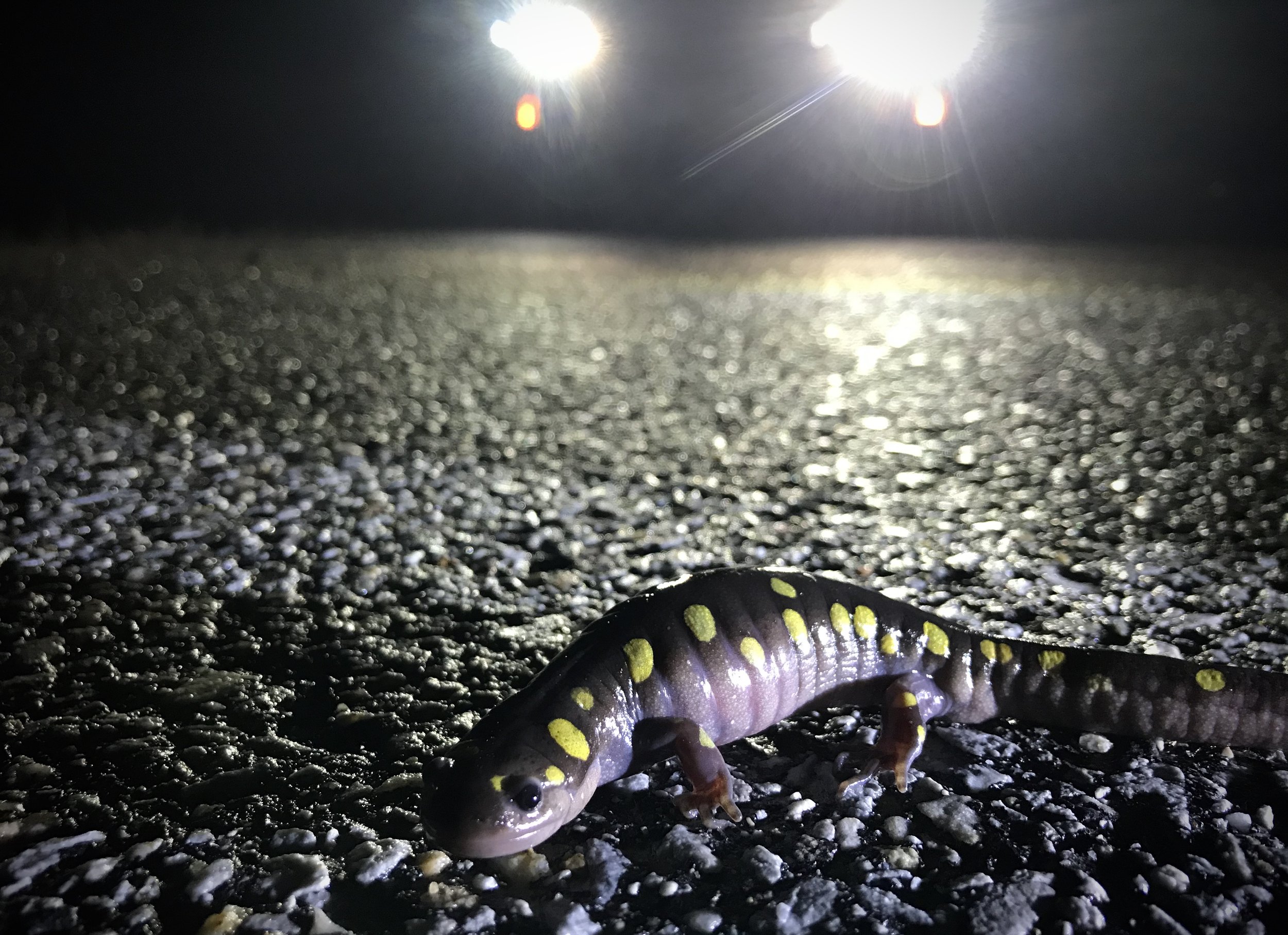Vt. Fish & Wildlife: Brake for salamanders, frogs crossing roads
April 8, 2023 | By Waterbury Roundabout Why does the spotted salamander cross the road? Because it's springtime in Vermont. The brief season is here to watch out for amphibians making their way at night to vernal pools and their favorite spring habitats. Photo of a spotted salamander in Clarendon by Luke Groff, Vt. Fish & Wildlife Department
It’s that time of year when the Vermont Department of Fish & Wildlife asks drivers to slow down and be cautious when traveling at night or to just take alternate routes to avoid driving roads near ponds and wetlands where salamanders and frogs cross during their breeding season.
For a short time each spring, these small creatures are on the move in large numbers as they make their way to their summer habitats. The crossings are also places for those interested in viewing amphibian wildlife to visit to see the animals up close and help map their movements.
“One of the benefits of checking out amphibian road crossings, is that you can see many individuals and species in a short period and small area, and some species may not be seen the rest of the year,” said Fish & Wildlife herpetologist Luke Groff. “The spotted and blue-spotted salamanders, for example, belong to a group called the ‘mole salamanders’ because, after breeding, they retreat underground or under logs or stumps and are rarely seen until the next spring.”
Road crossings are also a great way to see rare or otherwise hard-to-find species and help biologists with data collection. For example, the four-toed salamander is rare in Vermont, and its distribution is not well understood. Information from spring sightings is used by Fish & Wildlife, the Agency of Transportation, and other conservation partners to assess the need for wildlife passages and barriers in road construction plans that allow all wildlife, not just frogs and salamanders, to more safely cross roadways.
Groff encourages Vermonters to explore their nearby roads and report amphibian road crossings to the Vermont Reptile and Amphibian Atlas. If you can safely take photos of the amphibian species crossing, please include them.
Vermonters who wish to contribute to the Fish & Wildlife Department’s work to conserve frog and salamander populations can donate to the Nongame Wildlife Fund on their state income tax form or on the Vermont Fish and Wildlife website.

